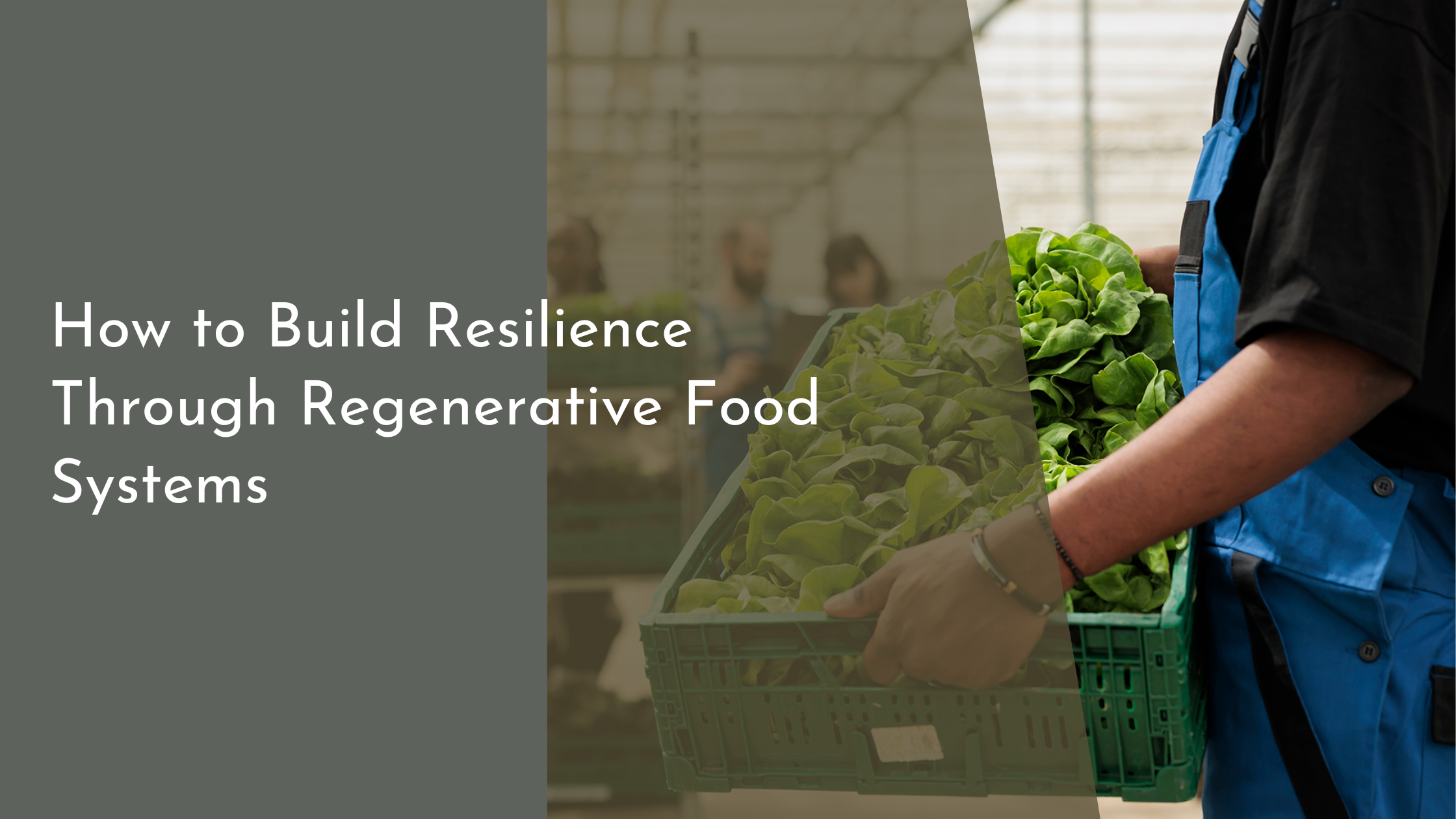How to Build Resilience Through Regenerative Food Systems
In recent years, the concept of resilience has gained significant attention in the context of food systems. As we face the challenges of climate change, biodiversity loss, and increasing global food demand, it becomes crucial to reevaluate the ways we produce and consume food. Regenerative food systems offer a promising framework to not only enhance resilience but also improve the health of our ecosystems. This article explores the principles and practices of regenerative agriculture and how they contribute to building resilient food systems for a sustainable future.
Understanding Resilience in Food Systems
Resilience in food systems refers to the ability of these systems to withstand and recover from disruptions, whether they are due to climatic events, economic shocks, or social changes. A resilient food system ensures that food production, distribution, and consumption continue effectively despite these challenges. Achieving resilience involves maintaining diversity, adaptability, and connectivity within the system. This means incorporating diverse crop species, adapting to changing environmental conditions, and ensuring robust supply chains.
Incorporating resilience into food systems also requires recognizing and integrating the social and economic dimensions. This involves supporting local food economies, empowering small-scale farmers, and creating equitable access to resources and markets. By fostering strong community networks and encouraging practices that support ecological health, food systems can become more sustainable and resistant to disruptions. This comprehensive approach not only ensures food security but also promotes a more equitable and sustainable food future.
Exploring Principles of Regenerative Agriculture
Regenerative agriculture is grounded in several key principles that focus on restoring and enhancing the health of ecosystems. First and foremost, it emphasizes improving soil health through practices like reducing soil disturbance, increasing plant diversity, and integrating livestock. Healthy soil is the foundation of resilient food systems, as it enhances water retention, reduces erosion, and supports robust plant growth. By adopting practices that build soil organic matter, regenerative agriculture increases the resilience of crops to extreme weather events.
Another core principle is the integration of natural processes and biodiversity to create self-sustaining agricultural ecosystems. This involves using cover crops, crop rotations, and agroforestry to enhance biodiversity and ecosystem services. By mimicking natural ecosystems, regenerative agriculture helps create habitats for beneficial organisms, reduces pest pressures, and improves pollination. This not only boosts resilience but also reduces dependency on synthetic inputs, making agriculture more sustainable in the long term.
Key Practices for Building Resilient Systems
Implementing cover cropping is a vital practice in building resilient food systems. Cover crops, such as clover and legumes, are grown not for harvest but to cover and protect the soil. They help prevent erosion, improve soil fertility, and increase water infiltration. Cover crops also play a crucial role in suppressing weeds and pests, thereby reducing the need for chemical inputs. By enhancing soil structure and health, cover cropping is a practical method to build resilience against climatic variations.
Another essential practice is diversifying crop rotations. A varied crop rotation can break pest and disease cycles, improve soil health, and increase yield stability. This practice involves alternating different types of crops in the same field across seasons or years. For instance, rotating between deep-rooted and shallow-rooted crops can help manage soil nutrients effectively and reduce the risk of soil depletion. This diversity not only buffers against crop failure due to disease or pests but also improves the overall resilience of the farming system.
Benefits and Future of Regenerative Food Systems
The benefits of regenerative food systems extend beyond resilience. They include enhanced ecosystem services such as carbon sequestration, water purification, and biodiversity conservation. By improving soil health and creating balanced ecosystems, regenerative agriculture plays a critical role in mitigating climate change impacts. This approach also promotes better nutrition and food quality by reducing reliance on synthetic fertilizers and pesticides, resulting in healthier produce for consumers.
Looking to the future, the potential of regenerative food systems is immense. As more farmers adopt regenerative practices, we can expect increased agricultural productivity, reduced environmental impacts, and stronger rural economies. Innovative technologies and research are further advancing these systems, making them more accessible and scalable. By prioritizing regenerative approaches, we not only build resilience in food systems but also contribute to a more sustainable and equitable food future for generations to come.
In a world facing unprecedented environmental and social challenges, regenerating our food systems is not just an option but a necessity. By embracing the principles and practices of regenerative agriculture, we can build resilient systems that improve the health of our planet and communities. The shift towards regenerative food systems offers a hopeful path forward, ensuring food security, promoting sustainability, and enhancing the resilience of our agricultural landscapes. Let’s embrace this transformative journey toward a brighter and more resilient food future.

